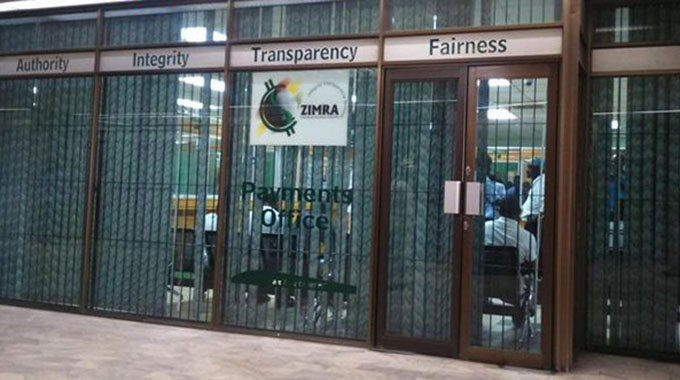Hidden treasure in trade-ins

Sitshengisiwe Ndlovu
The services sectors contribute significantly in national economies globally. International Trade postulates that trade-in services accounts for 50 percent of the national Gross Domestic Product (GDP).
United Nations Conference on Trade and Development (UNCTAD) confirms also that the services sectors are the largest segment of national economies and huge players in the trade chain and provision of employment.
There has been no consensus on the definition of trade by international organisations; the definitions differ including the definition by World Trade Organisation (WTO). WTO defines “trade-in services” as the supply of services by four identified modes namely cross-border supply, consumption abroad, commercial presence and movement of natural persons. Services cut across a broad section of industries determining the total productivity of the economy.
As a thread that impacts all processes, the costs, quality and availability of services contribute immensely to the performance of the economy including the delivery on Sustainable Development Goals (SDGs). Discussions on trade mostly cover trade-in goods despite the consensus that trade-in services contribute significantly to economies. The relative lack of coverage on trade-in services has been attributed mostly to the intangibility and non-storability nature of services.
Almost globally, the media has been seen as reluctant to highlight the role of services in the economy due to the services’ multi-dimensional aspect that also involves foreign direct investment, intellectual property rights and royalties thereby making it a complex phenomenon.
Trade-in goods like trade-in services thrive on comparative advantage, competition and knowledge transfer. However, trade-in services are heavily reliant on cross border movements involving natural persons including relocating of firms and conglomerate branches.
Within the African Continental Free Trade Area (AfCFTA), trade-in services have been identified as an area where Member States will commit their countries for accelerated socio -economic development. Notwithstanding the absence of reliable data on trade-in services, intra-trade services within Africa remains low as indicated by the 2018 World Development Indicators.
The AfCFTA Protocol on Trade-in Services seeks to liberalise trade-in services in Africa through mutual sector specific commitments by Member States. The initial negotiations are to cover five sectors identified as business services, communication, financial, tourism and travel, and transport services.
These negotiations are guided by harmony and convergence within the regulations that will order the steps of these identified sectors.
Following the acquis principle, and need to accelerate the industrialisation as fulfilment of AU action plan to Boost Intra Africa Trade (BIAT), AfCFTA identified the five sectors reflective of the eight recognised the Regional Economic Communities (RECs). The regional economic communities already have prioritised the identified the sectors and have put in place programmes to promote economic activity within the regions.
The compilation of data on trade-in services has been a challenge for governments and institutions including the negotiations at the AfCFTA. Capturing data on trade-in goods is relatively easy due to documentation that is generated.
The documentation provides a trail on origin, transaction value and destination of the goods simultaneously providing the much needed data.
However, the same cannot be said of trade-in services. This gap has handicapped policy makers in regulating the services sector as well as trade negotiations. The absence of accurate data has delayed processes forcing trade negotiations to be subjective in some instances as revealed by research.
As there are barriers to trade-in goods, similarly, there are barriers in trade-in services. The barriers that impede trade-in services are not found at border posts but may present through national regulatory frameworks obtaining within the country.
Under the AfCFTA Protocol on Services, it is within the mandate of the countries to impose laws that will regulate services as well as the suppliers of the services. The countries may do that in conformity with national policies or simply as a protective measure of the nationals. The challenge is the absence of accurate data to inform the design of the regulations. Extensive research on trade and investment policies reveals that restrictiveness in the mentioned policies has a negative impact on firms that rely on services as a major input.
The export sector’s competitiveness and quality of services are usually impacted negatively and may result in loss of the export market. Countries are therefore encouraged to be liberal in designing trade and investment policies so as to enable export firms to be competitive in foreign markets.
The AfCFTA Protocol on Services has been guided by the WTO international best practices.
The WTO has set out conditions, measures and regulations for services sector however, the AfCFTA has improved on the practices by adapting transparency as a significant component of the AfCFTA Protocol on Services. This makes the AfCFTA one of the progressive Trade Agreement in the world.
Sitshengisiwe Ndlovu is the president of OWIT ZIMBABWE: MBA/UNCTAD: Trade and Gender Linkages/IAC Dip/Cert: Trade in Services and SDGs: Robert Schuman Centre of Advanced Studies/IDEPCert: Making the African Continental Free Trade Agreement Work. She writes in her personal capacity. For more on trade matters visit her Blog on website:owitzimbabwe.org











Comments